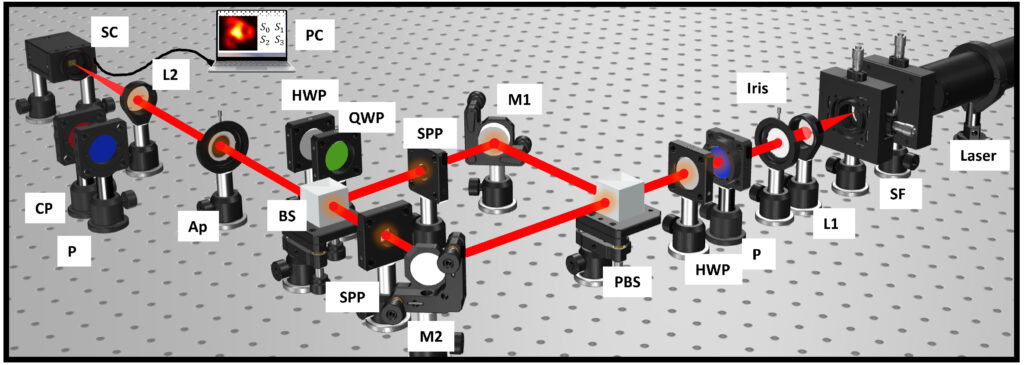We’d like to take a moment to recognize a recent publication we had a part in [1]. This was done in collaboration with a renowned optics research team in IIT Delhi. The topic of the article is the identification and characterization of Stokes vortex beams. A solution is presented using a combination of optical methods and deep learning.
As the name suggests, Stokes vortex beams are light beams with a cool looking vortex-like intensity pattern. Not only are they neat visually, but they can neatly trap and transport microparticles at the very center of the vortex. This ability to relocate material with high precision makes them a great engineering asset in multiple fields of optics, including microscopy, quantum information processing, and optical trapping. A variety of Stokes beams have been observed in the past by creating twisted polarization patterns in light. However, once created, identification of these beams has remained a challenge because two different vortex patterns sliced and imaged at a single plane by the camera can appear very similar. Beams that demonstrate this phenomenon of appearing very similar are known as degenerate pairs.
The paper presents an innovative approach to the characterization of these complex beams using a combination of a diffraction-based Stokes polarimetry method and physics-guided deep neural networks. We show a classification accuracy of 98.67% for 15 types of Stokes vortex beams which effectively handles several degenerate cases. This remarkable accuracy underscores the potential of the proposed method for not just detecting, but also accurately classifying these complex beams.
The paper highlights the creative application of AI, offering a fresh approach to detecting optical beams. It represents an important step in understanding stokes vortex beams and will help to democratize their application in microscopy, beam shaping, and potentially new label-free imaging techniques beyond what can be achieved in the present label-free optical microscopy community.
Please read the full paper for a deeper insight into our recent work. Your thoughts and insights would be invaluable as we continue to explore the fascinating realm of optics!
- Gauri Arora, Ankit Butola, Ruchi Rajput, Rohit Agarwal, Krishna Agarwal, Alexander Horsch, Dilip K Prasad, and Paramasivam Senthilkumaran, “Taxonomy of hybridly polarized Stokes vortex beams,” Opt. Express 32, 7404-7416 (2024) . Link.
